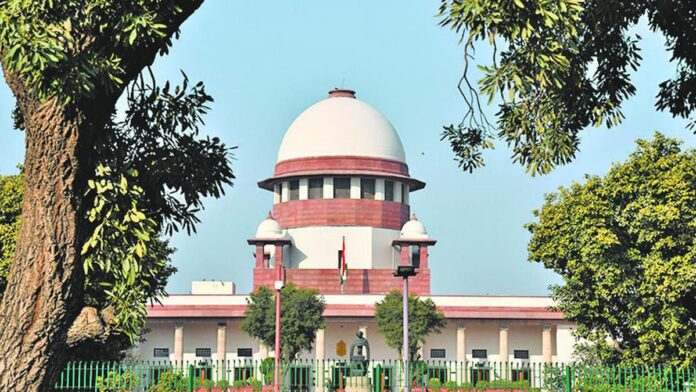Maintenance rights are a crucial aspect of family law, particularly in the context of marital disputes. The recent ruling by the Supreme Court of India has brought significant attention to the relationship between maintenance rights and the restitution of conjugal rights under the Hindu Marriage Act (HMA). This article delves into the implications of the Supreme Court’s decision, the legal framework surrounding maintenance rights, and the ongoing debate regarding the relevance of Section 9 of the HMA in contemporary society.
Maintenance rights are designed to provide financial support to a spouse who may be unable to support themselves after separation. The Supreme Court’s ruling clarifies that these rights are independent of any court orders regarding the restitution of conjugal rights. This means that a wife can claim maintenance even if she does not comply with a court order to return to her husband’s home.
Understanding the Legal Framework
Section 9 of the Hindu Marriage Act, 1955, allows a spouse to petition the court for restitution of conjugal rights if the other spouse has withdrawn from their society without reasonable excuse. The intent behind this provision was to preserve the sanctity of marriage and encourage couples to live together. However, the application of this law has been contentious, with critics arguing that it can be used to coerce individuals into relationships against their will.

The Supreme Court‘s recent ruling emphasizes that maintenance rights and the restitution of conjugal rights are separate legal issues. This distinction is vital, as it acknowledges the complexities of marital relationships and the need for financial support, regardless of compliance with court orders.
The Case Background
In the case at hand, the wife left the matrimonial home shortly after marriage, citing ill-treatment by her husband and his family. The husband subsequently filed for restitution of conjugal rights, while the wife sought maintenance under Section 125 of the Code of Criminal Procedure, 1973, claiming neglect and inability to support herself.
Despite the family court’s decree for restitution of conjugal rights, the wife did not return to the matrimonial home. The husband challenged the maintenance order, arguing that her refusal to comply with the court’s decree disqualified her from receiving financial support. However, the Supreme Court ruled in favor of the wife, stating that her entitlement to maintenance was not contingent upon her compliance with the decree.
Key Takeaways from the Supreme Court Ruling
-
Independence of Maintenance Rights: The Supreme Court clarified that maintenance rights are independent of the restitution of conjugal rights. A spouse’s refusal to return to the matrimonial home does not automatically negate their right to financial support.
-
Case-by-Case Consideration: The court emphasized the importance of evaluating each case on its own merits. Factors such as the reasons for separation and the circumstances surrounding the marriage must be considered when determining maintenance rights.
-
Historical Context and Modern Relevance: The ruling also highlights the ongoing debate regarding the relevance of Section 9 of the HMA in modern society. Critics argue that the provision is outdated and reinforces patriarchal norms, while proponents believe it serves a social purpose in preserving marriages.
The Ongoing Debate on Conjugal Rights
The legal discourse surrounding Section 9 of the HMA has evolved over the years. In 1983, the Andhra Pradesh High Court questioned the provision’s relevance, suggesting it could coerce individuals into unwanted relationships. However, the Supreme Court overturned this ruling, asserting that the provision serves a social purpose.
The challenge to the constitutionality of Section 9, filed by students from Gujarat National Law University, raises critical questions about gender equality and individual autonomy. The petitioners argue that the provision perpetuates gender stereotypes and violates fundamental rights, including the right to privacy.
The government’s stance, as articulated in a 2022 affidavit, defends the provision as gender-neutral and a means to resolve marital disputes amicably. However, substantive hearings on the matter are still pending, leaving the future of Section 9 uncertain.
Implications for Future Cases
The Supreme Court’s ruling on maintenance rights sets a significant precedent for future cases involving marital disputes. It reinforces the principle that financial support should not be contingent upon compliance with court orders related to conjugal rights. This decision may encourage more individuals to seek maintenance without fear of losing their rights due to non-compliance with restitution orders.
As societal norms continue to evolve, the legal framework surrounding marriage and maintenance rights will likely undergo further scrutiny. The ongoing debate about the relevance of Section 9 of the HMA reflects broader discussions about gender equality, individual rights, and the role of the state in regulating personal relationships.
In conclusion, the Supreme Court’s ruling on maintenance rights underscores the importance of protecting individuals’ financial security in marital relationships. As the legal landscape continues to change, it is essential to consider the implications of such rulings on the lives of individuals navigating complex marital dynamics. The decision not only affirms the independence of maintenance rights but also highlights the need for a nuanced understanding of the factors influencing marital relationships. As discussions around the Hindu Marriage Act and its provisions continue, it is crucial for lawmakers and society to engage in meaningful dialogue about the evolving nature of marriage, gender roles, and the rights of individuals within these frameworks. The future of family law in India may very well depend on how these issues are addressed in the coming years, ensuring that the legal system remains responsive to the needs and rights of all individuals involved.

